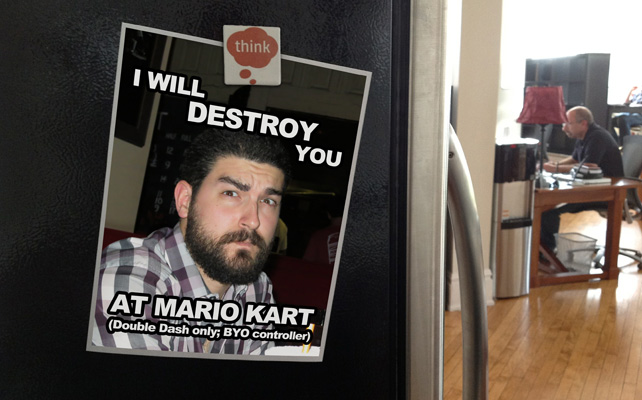Games are Serious Business

What comes to mind when you hear the word ‘game’? People are no strangers to games. Games like sudoku and crossword puzzles help some pass the time on their train rides to work, game nights bring families together for friendly competition, and technology-drenched video games immerse players in seemingly tangible virtual realities. Games provide people with a vehicle to play, urging us to be creative and allowing us to work out a sometimes inert ability to imagine and pretend. But games can be serious business.
In his new book, The Gamification of Learning and Instruction, Karl Kapp reminds us that games have an incredible potential not only to entertain, but also to teach:
“Do not think of games for learning in the same way as you think of games for children. Gamification is a serious approach to accelerating the experience curve of learning, teaching complex subjects, and systems thinking.”
Gamification, or the process of applying game mechanics to enhance real world contexts, is becoming increasingly popular as its potential for learning is realized. As the strategy develops and evolves, it is important to establish a unified vocabulary to discuss the dynamics of games as an educational tool, which Kapp’s book provides in great depth. The book contains anecdotal examples that are readily accessible to a newcomer of game creation but it also dives deep into defining the components of games and their dynamics as learning tools. This book will provide a strong foundation for any reader interested in the subject and is also a great reference for seasoned professionals.
He begins the book by defining gamification, in order to dismiss any misconceived notions about some of its more commonly used elements —such as points, rewards, and badges—that are the most obvious and often misused elements in trying to transform tasks into a games. In the beginning Kapp’s breakdown of what a game is not left me asking, “What’s left?” This is where the book gets interesting—taking the reader through the complex world of game design. I’ve been a fan of games for my whole life, particularly videogames, and as I read the book I started to recognize aspects of games that I have experienced before but didn’t have the right words to describe them.
Looking at games as an educational tool, players are synonymous with students and game designers with teachers. But students are not the only ones learning in this situation. Game designers must also learn a great deal about their players. Consideration has to be put into providing players with an engrossing experience that successfully merges the lessons being taught with the correct gameplay elements to support that education. “It takes a great deal of design and up-front work to determine which game elements should map to which types of content and what incentives and rewards work with what type of environment,” Kapp says. Successful games are a well-choreographed set of events by game designers built to immerse players.
In order to describe the ways that players become engaged in games, Kapp describes a number of learning theories that support the use of games in teaching people. Beyond points and rewards, games provide motivation through challenges. Scaffolding, a theory that players can progress towards independent problem solving by completing progressive challenges with decreasing guidance, forces players to build on their experience in a game to reach new levels.
Another theory is the idea of flow, which describes the sensation of losing track of time while engaged in something. It is most often experienced when the challenges being presented to a player are well-balanced with the person’s abilities. Trying to create instruction that will facilitate a flow experience is a strong goal for a designer.
As the conversation about games becomes louder and their acceptance as a serious learning tool becomes more widespread, I’m looking forward to exploring these and other subjects that Kapp covers in his book in more depth. At Think Brownstone we are passionate about providing rich experiences and intelligent solutions to our clients, so it should come as no surprise that quite a few of us have our heads wrapped up in how to incorporate elements of gameplay into our designs. Our in-house gamers continue to explore games as a medium and the blurring lines between entertainment, challenge, and education, employing the advice Kapp offers in his last chapter, “If you want to learn more, play games”. (There is also a standing challenge for anyone interested in battling Mike Colibraro in Mario Kart: Double Dash. He will not go easy on you.) Are you ready to play?
Send us a postcard, drop us a line
Interested in working with us?
We scope projects and build teams to meet your organization's unique design and development needs. Tell us about your project today to start the conversation.




